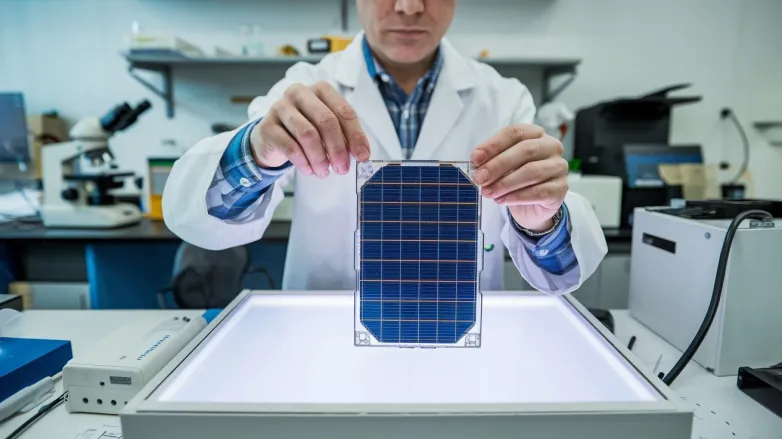World-Leading Efficiency: NUS Team Sets World Record with 26.4% Perovskite-Organic Tandem Cell
- NUS researchers raise the bar for flexible solar tech, hitting a certified 26.4 % efficiency with a perovskite–organic tandem cell that could soon power drones, wearables and smart fabrics.

When Assistant Professor Hou Yi and his colleagues at the National University of Singapore (NUS) first set out to merge perovskite and organic photovoltaics, they were chasing a long-standing dream in thin-film solar research: capturing the elusive near-infrared (NIR) photons that mainstream devices squander. This week that dream moved decisively closer to reality.
Working within the Solar Energy Research Institute of Singapore (SERIS), the team has unveiled a perovskite–organic tandem solar cell that converts sunlight into electricity at a certified 26.4 % efficiency over a one-square-centimetre active area—a world record for its class. The advance hinges on a newly engineered narrow-bandgap organic absorber whose asymmetric, extended-conjugation structure drinks in NIR light without sacrificing charge separation. Ultrafast spectroscopy confirms that photo-generated charges are extracted with minimal energy loss.
Hou’s group stacked this high-performing organic layer beneath a best-in-class perovskite top cell, joining the two with a transparent conducting-oxide interconnector. Lab-scale prototypes reached 27.5 % on 0.05 cm² and 26.7 % on 1 cm², while the independently certified 26.4 % mark now stands above all perovskite–organic, perovskite–CIGS and single-junction perovskite devices of comparable size. For context, today’s flexible organic films rarely clear 20 %.
Why does it matter? Perovskite-organic tandems marry high efficiency with thin, lightweight substrates that bend and roll—qualities unthinkable for silicon. “Imagine self-powered health patches, autonomous drones or smart apparel that harvests daylight to run embedded sensors—no bulky batteries needed,” Hou notes. The team is targeting >30 % efficiency, a level that would rival rigid crystalline-silicon panels while opening entirely new design spaces.
Challenges remain. Operational stability under Singapore’s tropical humidity is the next hurdle, alongside scaling from coin-sized cells to metre-wide rolls. SERIS has already lined up pilot-line work to translate the chemistry into roll-to-roll production, a step essential for cost-competitive manufacturing. If successful, the breakthrough could leapfrog flexible solar tech from lab curiosity to everyday utility—one more sign that the perovskite revolution is far from spent.
Also read


